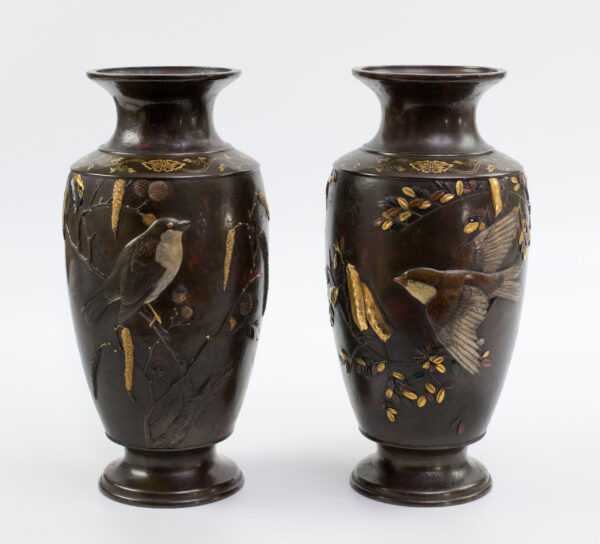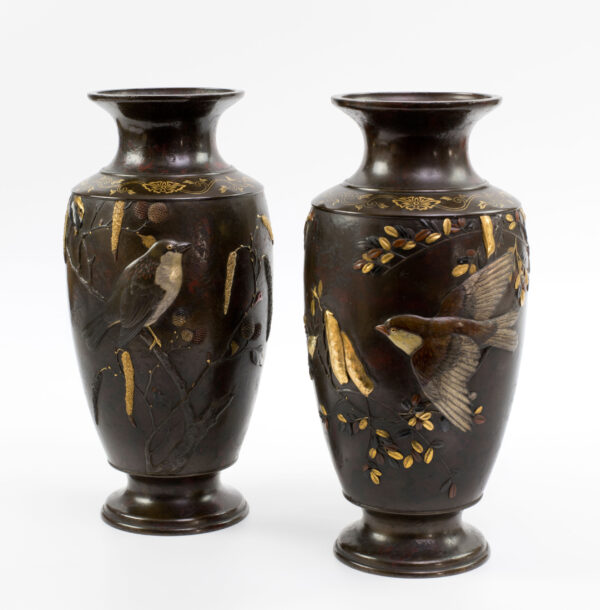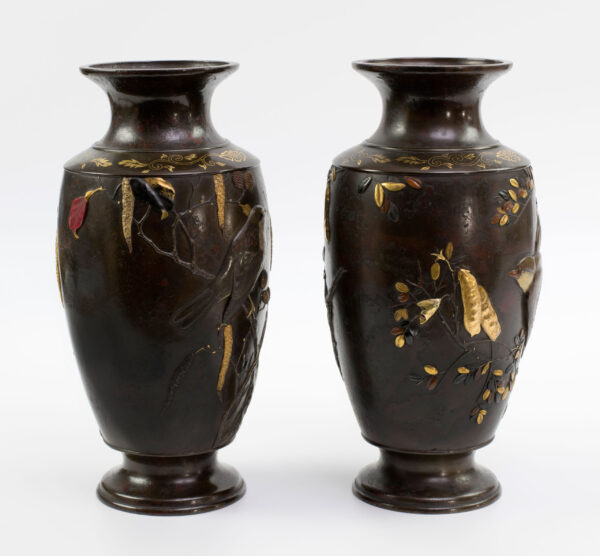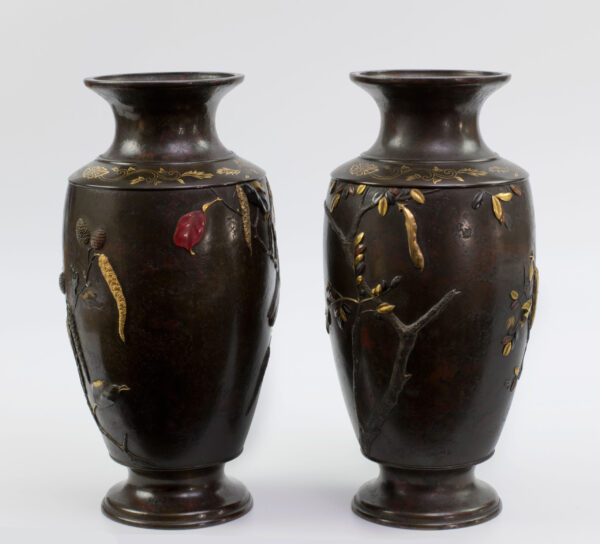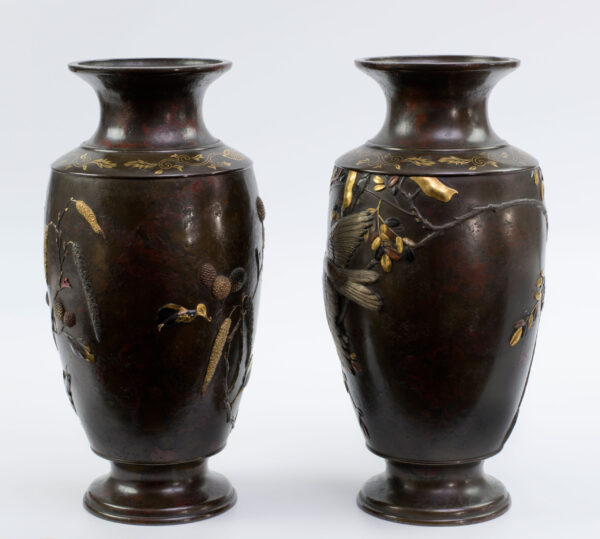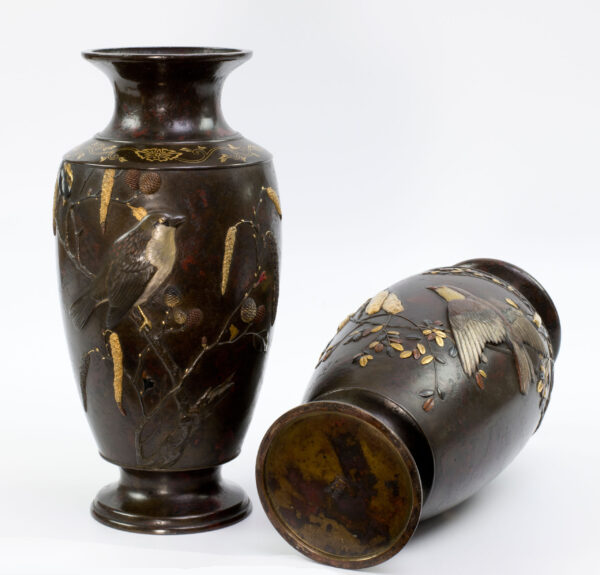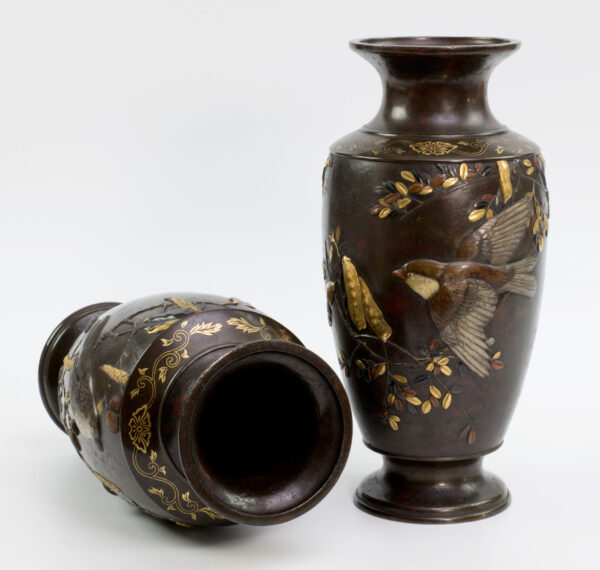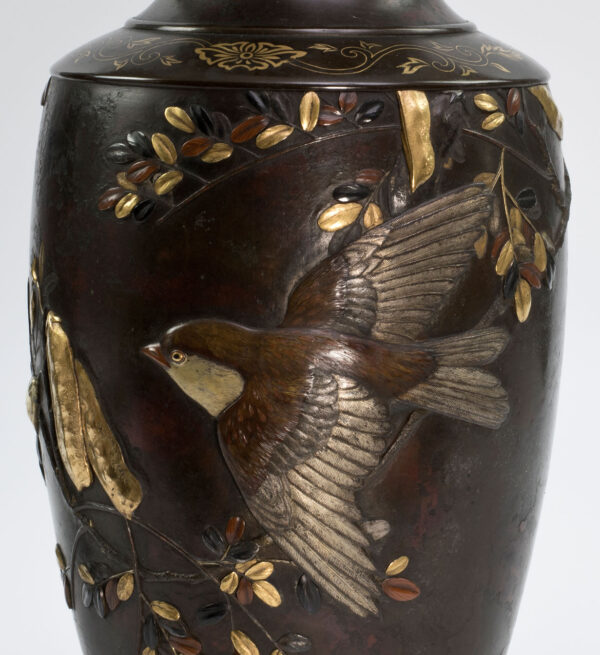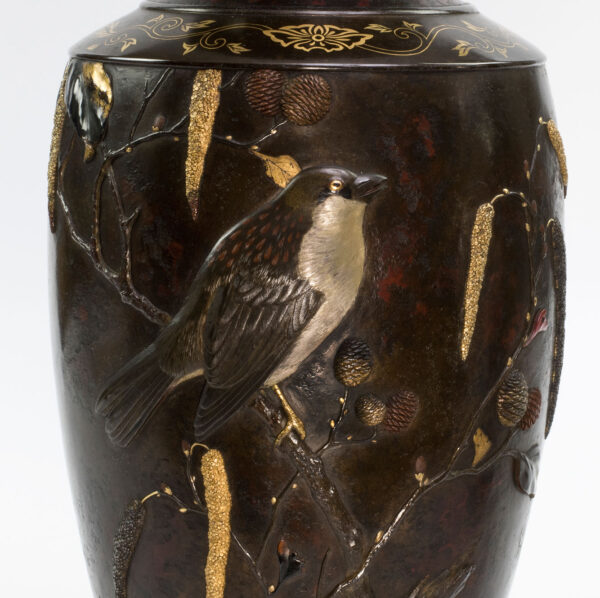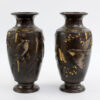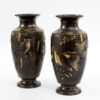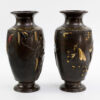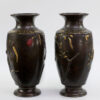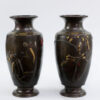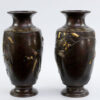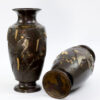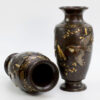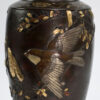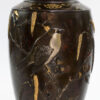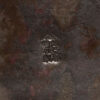As part of our Japanese works of art collection we are delighted to offer this most majestic pair of Meiji Period 1868-1912 multi patinated vases by the highly regarded Imperial artist Suzuki Chokichi, his art name Kako, here Chokichi has used his exceptional skills to showcase mixed alloy techniques in sensational autumn colours, the crusty skin of these incredibly heavy vases is a combination of greens , browns and reds that only Chokichi could have perfected and instantly recognisable as his work. The native birds are cast and decorated in the finest quality and once again synonymous with work by Chokichi, the other decoration demonstrates the artists abilities and eye for the unusual , bright gold hanging bean pods are interspersed with other native flora on the right hand vase, whilst interesting mixed metal catkins and grasses decorate the other, each vase has been painstakingly inlaid around the shoulders with a band of gold floral decoration and is signed to the underside with the full signature of the Kiritsu Kosho Kaisha , a most charming pair of vases from the eraly period of Chokichis output, certainly pre 1891, just delightful in every respect .
Literature :
As previously stated Suzuki Chokichi (Kako) was director , designer and lead artist of the government sponsored Kiritsu Kosho Kaisha company until its closure in 1891 , his adventurous artistic ideas, as demonstrated in these vases, were reputedly not always well received by the government funded factory, they probably had one eye on commercial quantity and more repetitive works than Kako would have liked, he went on to produce many other individual high quality and now famous works housed around the worlds great collections and leading museums , including a monumental 2.8m Koro surmounted by an Eagle which resides in the Victoria and Albert museum, and arguably his most famous known work being a set of twelve mixed metal birds of prey, now rightfully resting in the Tokyo national museum .
Suzuki Chokichi’s work was eventually rewarded in 1896 when he was granted the rare accolade of becoming an Imperial artist ( Teishitsu Gigeiin ).
I am pleased to say his incredible artistic skills are being recognized some 120 years later, by leading collectors of Japanese Meiji period metalworks.
Condition report :
Lovely original condition.
Approximate Sizes :
Height : 11 5/8″ 29.25 cm
Width : 6.0″ 15.3 cm
Combined weight is a hefty 6.4 kg
Free worldwide delivery and a certificate of authenticity are included within the price of this item.
